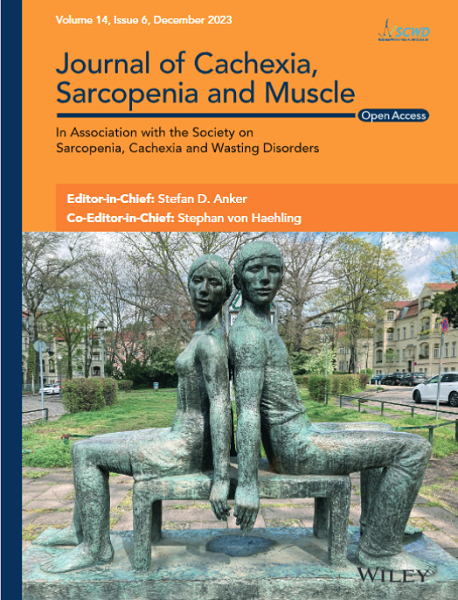Longitudinal association between statins and changes in CT-derived body composition in patients with abdominal aortic aneurysm
Abstract
Background
Loss of skeletal muscle mass and systemic inflammation may offer prognostic value in patients with abdominal aortic aneurysm (AAA). The longitudinal progression of abnormal body composition parameters and their determinants is poorly reported. Statins are widely used medications that improve the prognosis of cardiovascular disease and interact with both muscle tissue and systemic inflammation. The present study aimed to describe the association between statin therapy and both pre-operative and longitudinal CT-derived body composition in patients undergoing elective intervention for AAA.
Methods
A total of 756 consecutive patients undergoing elective intervention for AAA at three centres were retrospectively recruited. Body composition analysis was performed on pre-operative and follow-up CTs at L3 to generate subcutaneous adipose tissue index, visceral adipose tissue index and skeletal muscle index and density (SMI and SMD). Systemic inflammation was assessed using the systemic inflammatory grade.
Results
A total of 756 patients (702 [93%] males, median [interquartile range, IQR] age 73.0 [11.0] years) were included, with a median (IQR) follow-up of 67.0 (32) months and 235 deaths during the follow-up period. There were 582 patients (77%) receiving statin therapy and 174 patients (23%) not receiving statin therapy. Follow-up CTs were available for 273 patients. From pre-operative to follow-up CTs, there was a decrease in median SMI (P < 0.001) and SMD (P < 0.001) and an increase in the comparative prevalences of low SMI (43% vs. 50%, P < 0.01) and low SMD (64% vs. 88%, P < 0.001). There were no differences in baseline clinicopathological characteristics, systemic inflammation or pre-operative CT-derived body composition parameters between patients with and without >10% loss of skeletal muscle mass. In patients with ≤10% loss of SMI, mean (95% confidence interval) survival was 91.6 (87.2–95.9) months versus 89.3 (80.4–98.2) months in patients with >10% loss of SMI (P = 0.58). Patients receiving statin therapy had a higher American Society of Anesthesiologists grade (P < 0.001), a higher body mass index (BMI) (P < 0.05) and a greater prevalence of normal pre-operative SMI (P < 0.001).
Conclusions
In patients with AAA, skeletal muscle mass and density appear to progressively decline despite treatment of AAA, though specific determinants of this are uncertain, and statin use does not appear to predispose to either muscle loss or preservation. Statin therapy appears to be associated with a lower rate of pre-operative low skeletal muscle mass, despite greater comorbidity and BMI. Further investigation of the progressive changes in muscle mass and quality, statin therapy and systemic inflammation is warranted.


 求助内容:
求助内容: 应助结果提醒方式:
应助结果提醒方式:


